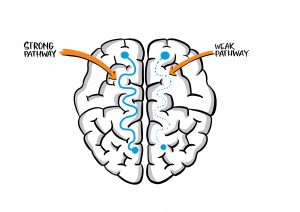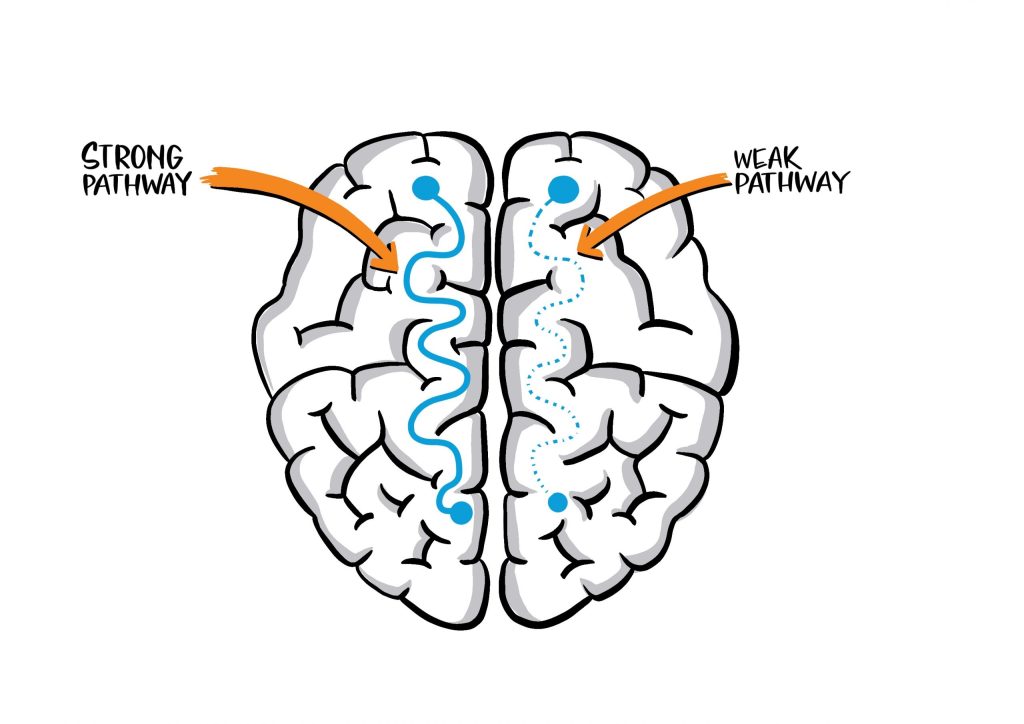How long does it take to create a new habit?

It can take anywhere from 18 to 254 days to form a new habit.
In my experience working with thousands of clients, it takes around 90 days on average for a sustainable new habit to become automatic and not so cognitively taxing.
My seventeen-year-old son is learning to drive (L plate driver in the photo). I really notice the improvements when he drives regularly on a daily basis. Comparing this to when he drives occasionally, it takes a lot more effort to get into his driving groove.
When he drives regularly, he is smooth and more confident in making quick decisions wisely.
Do you have a task that once was incredibly difficult that you now find easier than you ever thought possible?
Embedding a habit
My son often says ‘how do you and Dad drive, talk, listen to the radio and eat’ as he feels totally exhausted after driving for an hour just concentrating on driving.
Think about your own driving – Once a habit is embedded it doesn’t take the cognitive effort as it did when you first were learning. Daily repetition is key for forming a new habit and continues to get easier over the 30, 60 and 90-day milestones.
Reflecting on 2020 and 2021
With the pandemic and workplace trends from working remotely and hybrid models, it is taking the workforce around 90 days to adjust, adapt and be operating in a rhythm of productivity.
Some of my HR and CEO clients have mentioned recently they are finding it challenging to get their people to come back to working in the office environment and face resistance.
Remember – It takes effort to change and different energy is required to go back to working in the office environment along with concerns around health safety. Habits are like a muscle doing something new and a different routine takes energy and practice before it becomes easier. Attention is a limited resource as the human body sends 11 million bits of information per second to the brain for processing subconsciously and the conscious mind can only process about 40-50 bits per second which is why the brain relies on the habit centre to save energy.
So, what are the key ingredients to habit transformation in just 90 days?
Firstly, understanding how habit formation is created
One of the most significant discoveries in neuroscience is neuroplasticity.
Neuroplasticity is the brain’s ability to adapt in the same way malleable soft plastic can change shape.
How does it work? Think of your brain as a dynamic power grid, with billions of neural pathways or roads lighting up every time you think, feel or do something.
Some of these roads are well travelled; these are our habits. These are our established ways of thinking, feeling and doing. Every time we think in a certain way, practise a particular way of doing something or feel a specific emotion, we strengthen these neural roads, and it becomes easier for our brains to travel them. This saves neural energy – as our brain is an energy-demanding organ.
When we learn a new task or emotion, we carve out a new road. As we focus more on a new habit, the old road weakens (see diagram). This process of rewiring our brain by forming new connections (new roads) and weakening old ones is neuroplasticity in action. 
‘Neuroplasticity can be defined as brain’s ability to change, remodel and reorganise for purpose of better ability to adapt to new situations.’ Vida Demarin, Neuropsychiatry.
We often have behavioural habits that no longer serve us in this busy digital age.
Do you have one behavioural change you would like to make? What would it look like to achieve it in 90 days?
Threat trigger, routine and reward
The next step is identifying which habits are serving you and those that are no longer of value and holding you back.
There are three components: threat trigger, routine, and reward.
Identifying the ‘threat trigger’ and the ‘why’ behind the habit that no longer serves you and no longer adds value to reach your purpose.
Aligning new routines based on your motivational drivers and breaking down the goal into 30, 60 and 90-day milestones. Plan to celebrate each one and with whom (this is the reward circuitry and powerful with helping us stay on the journey when facing obstacles along the way).
The 3 step brain-based habit model
- Create a toward state – through emotion, passion and interest. A toward states occur when the brain perceives or classifies an initiative as worthwhile the effort.
- Facilitate new neural connections – Learning new things and engaging in creative activities can all help increase neuroplasticity. Getting adequate sleep and regular exercise also support brain growth and health so you have the energy (fuel) to create new neural connections.
- Embed new wiring – Identifying clearly the WHY behind your goal (aka, the driving force). Include the desired outcomes while focussing attention on it daily in bite-size chunks – breaking down the steps and reflecting each week on what is working and areas of focus for the following week. These steps allow you to adjust along the journey based on your insights. Positive feedback and intrinsic rewards (milestone celebrations) help us to keep going even when the road is challenging.
Important tips to help:
- Brainstorm all the potential opportunities/rewards from the change with a mentor or advisor that you respect or look up to.
- Anticipate some of the core challenges you may face and ideas on how to mitigate them (priming the brain for known and unknown obstacles).
- A visual representation like a vision board can bring your goal to life and make it easier to reflect daily.
Link Success programs are designed specifically to focus on embedding a new habit to reach your desired goal and outcome within each 90 day period.
Contact us via email at vannessa@linksuccess.com.au to set up a time to chat about your requirements and how we can help you achieve your goals.





